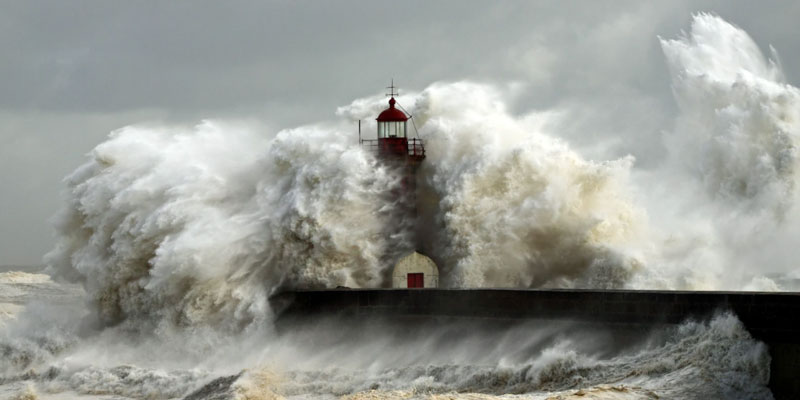On WNRI 1380 AM/95.1 FM, John DePetro and Justin Katz discuss:
- Housing czar, we hardly knew ye.
- The state of the governor
- Providence police to hold auditions for the role of chief
- Caught [up in politics] in Providence
Featured image by Edwin Lord Weeks on WikiArt.
[Open full post]Somewhere or other in my social media flow, I recently came across the outrage of a moment, wherein a director of communications for a school district jumped in to halt a Dr. Seuss reading that had prompted discussion of America’s racial past:
The assistant director of communications for Olentangy Local School District abruptly stopped the reading of the Dr. Seuss book “The Sneetches” to a third-grade classroom during an NPR podcast after students asked about race.
Shale Meadows Elementary School third grade teacher Mandy Robek was reading “The Sneetches” to her class as part of NPR’s latest episode of “Planet Money” about the economic lessons in children’s books. During the podcast, which aired Friday, Amanda Beeman, the assistant director of communications for the school district, stopped the reading part way through the book.
Honestly, I forget which side of the political war was outraged at this… maybe both sides would be. But I’m finding as I clear the crest of middle age, what jumps out at me with such stories is how little human sympathy there is. Maybe it’s because the nature of my work, recently, puts me in frequent contact with highly diverse people trying to fulfill their roles in multiple organizations. Navigating modern society can be a huge challenge.
One might pause to wonder why a school district serving a population of around 30,000 people needs a dedicated “assistant director of communications,” but even that question reinforces the point. Whether it should exist or not, Assistant Director Amanda Beeman has the job. She applied for it. Presumably she was excited about the opportunity.
So, one day, the district has this big-time journalist visiting a classroom, so everybody’s trying to do what they think they should do. A communications employee’s mind must whir at the opportunity and risk. So, maybe Beeman’s response wasn’t perfect, or even reasonable; maybe she’s young or not very good at the job for some other reason. Be that as it may, ought it be considered news? Perhaps after many incidents established a pattern, but a single example of bad judgment? (Note, by the way, that the NPR journalist was clearly a participant in the controversy, not merely somebody happening to report on it.)
The standard appears to be that everybody should be ready at every time not only to fulfill their jobs in all their complexity, but also to manage an international PR presentation for the media, on the assumption that anything can go viral.
Actually, it’s worse than that, because the rules aren’t evenly applied, which one suspects is the underlying motivation. If you’re on one side of the political divide, your actions must be impeccably beyond reproach; if you’re on the other, an ocean of acceptance and forgiveness is available.
I think it’d be better if we just stopped playing that game and strove actually to see things from the opposing perspective and put incidents in their proper context.
Featured image from Shutterstock.
[Open full post]Nobody should be surprised by news that Roomba vacuums caught images of users in (umm) compromising positions and then the Venezuelan workers who review the images for product development posted them in an online forum. This is a major reason that, even as an “early adopter” type of guy, I’m reluctant to move onto the “Internet of things,” especially when images and video are involved.
Then again, I’m old enough to remember the pre-digital-camera days when people would take their (let’s say) “fun” couple photos to be developed without thinking that somebody might be going through them. Most often (we can hope) the review was simply a matter of quality-assurance, but even so… humans are human.
[Open full post]Perhaps my favorite moment in all of music ever comes in the last movement of Beethoven’s Ninth Symphony. The music is a bouncy march, and in the libretto, the singers are proclaiming an intent to take paradise by storm, like “a victor.” The mood changes suddenly, however, and I’ve always thought it a deliberate statement that you can’t get to Heaven with that attitude.
The school choice movement had something of that feel a decade ago. Advocates thought their solution obvious, and expected to sweep the country, but it didn’t happen. The reason wasn’t special interests (i.e., teachers unions); that fight was invigorating. The problem was that the advocates marched forward, thinking they had a wave of support behind them, and when they turned around, their political soldiers were standing around looking at their shoes.
So, it often happens that I’ll see an essay like this, from Laura Williams and get that ol’ feeling of certainty of a solution:
Everywhere in education, you see incentives at work. The incentives, though, are so far removed from the actual goals of education that they produce perverse results.
Goodhart’s Law is usually stated, “When a measure becomes a target, it ceases to be a good measure.”
Problem: When you set targets, like results on tests (especially standardized tests), the system will retool to improve those results, whether or not that serves the actual mission. We should note, of course, that public schools aren’t even accomplish improved test scores, which is where the special interests come into play. For that reason, we can’t trust the system that can’t even teach to the test to teach to a much mushier standard that the same system sets internally.
Solution: Make family choice the metric. Families want what’s best for their children, right? So, let them choose their schools, and the schools that gain students will be the ones that best serve them. Metric and purpose meet!
For the depressing twist, turn to Providence, where a parent reported to the new mayor, Brett Smiley, referring to the likelihood that the system is going to closer her children’s school:
“It’s a neighborhood school, it’s a family, it’s a community,” Michelle Miller, a Providence parent, said. “I was heartbroken. I was devastated. It needs improvements, but I don’t believe it’s crumbling, if it’s crumbling. And if it’s so devastating, why are our children still being housed there for the next six months?”
The building isn’t the point. Providence schools have failed generations of children regardless of the physical structures. Parents should be anxious and outraged, and in fairness, many have been. Those parents, however, have moved or found ways to utilize private schools or charters. Those who don’t do so must value their schools based on different criteria — that they are neighborhood schools, families, communities. The teachers feel like members of those “families,” not outside professionals hired to do a job. Meanwhile, the teacher unions cultivate the sense among their members that they are essentially replaceable servants whom the community will abuse absent strong representation.
And so, we need tests (especially standardized tests) to ensure that communities aren’t abused in the other direction, and the story of education remains the battle between a sense of neighborhood, family, and community and an organizational imperative for the unions to prove their value to their members. A system like this can’t be reformed by a storm of facts and smart policy. It requires painstaking community-building, little by little, done patiently.
But nobody has incentive to do that for long, and so the problem will never be fixed. The parents of school children are generational, and every generation has to relearn the lessons of the system’s reality.
Featured image by Vahid Moeini Jazani on Unsplash.
[Open full post]On WNRI 1380 AM/95.1 FM, John DePetro and Justin Katz discuss:
- The housing secretary on a tightrope
- Congress selects a speaker (without RI)
- RI socialists put their foot down
- McKee (yawn) inaugurated
- Smiley reaches out to parents (for any reason?)
Featured image by Fernand Leger on WikiArt.
[Open full post]This incident occurred the week before Christmas, but I still can’t believe it’s real:
A charity volunteer has been arrested and charged on four counts after she told the police she “might” be praying silently, when questioned as to why she was standing on a public street near an abortion facility.
Police approached Isabel Vaughan-Spruce standing near the BPAS Robert Clinic in Kings Norton, Birmingham. Vaughan-Spruce was carrying no sign and remained completely silent until approached by officers. Police had received complaints from an onlooker who suspected that Vaughan-Spruce was praying silently in her mind.
The provided by video of the arrest doesn’t make it any less unbelievable. At least the police were cordial to somebody who was obviously not a threat.
[Open full post]On WNRI 1380 AM/95.1 FM, John DePetro and Justin Katz discuss:
- The passing of former Governor Almond
- McKee inaugurated
- Smiley takes Providence (where?)
- The General Assembly heads toward another session
- A double standard for the progressive creep
Featured image by L. Filipe C. Sousa on Unsplash.
[Open full post]Like him or hate him, this thread of tweets from Jordan Peterson should be a wakeup call as to the direction of Western Civilization:
BREAKING: the Ontario College of Psychologists @CPOntario has demanded that I submit myself to mandatory social-media communication retraining with their experts for, among other crimes, retweeting @PierrePoilievre and criticizing @JustinTrudeau and his political allies.
I have been accused of harming people (although none of the complainants involved in the current action were clients of mone, past or present, or en were even acquainted with any of my clients. …
We are now in a situation in Canada under @JustinTrudeau where practicing professionals can have their livelihoods and public reputations threatened in a very serious manner for agreeing with the Official Opposition and criticizing major government figures.
To modern progressives everything is political. Everything you value in life is another lever for them to force assent for the things that they value.
Those who support this shift — believing the new rules will only tangle bad people doing bad things — must try to objectively consider to important points:
- Eventually, the suppression will target something you value.
- Participants in oppressive movements always think they’re on the right side and justified for trampling boundaries.
Like it or not, we’re all tangled up with each other, so in some degree, the choices we make and the value we create or destroy affect everybody. How we structure society is a decision about how we utilize “our” resources. That doesn’t mean maximizing efficiency or economic advancement or anything else must be the highest purpose; we just need to remember that we’re acting at that level.
With that in mind, I can’t for the life of me understand why we apparently just assume that politicians in public office are the best stewards for the money that winds up in their hands:
Rhode Island’s official revenue estimators anticipate a $610-million year-end surplus, and hundreds of millions more from other pots of federal money that is not yet spent.
What’s a Rhode Island legislator to do with all this one-time money? Spend it? Return it to taxpayers? Salt it away in the state’s rainy-day fund for the next inevitable downturn? We asked Rhode Island’s part-time lawmakers and lawmakers-elect.
Whether they fritter it away to special interests, put it to shared productive use, or “give it back” to taxpayers, why should the use of so much of our collective wealth in their hands? Do people assume that politicians are particularly smart or moral? Does everybody have such faith in the processes of politics, with its lobbyists, corruption, and propaganda that we can trust it produces the best outcomes ideal (or even reasonably competent) outcomes?
My suspicion is that people don’t really think about it. How things are done is simply how they are done; somehow “we” must have decided to do it this way long ago, or maybe it’s the natural state of nature. Perhaps the first step toward better results is simply to prompt people to think a bit about these matters.
Featured image by Justin Katz.
[Open full post]A skeptical reader can find many things worthy of comment in David McRaney’s How Minds Change even beyond the author’s central objective of training people how to manipulate others psychologically to implement radical policies. Not wanting to write a book in response, I’ll probably just bring them up as they become relevant.
One side point that struck me as I read McRaney’s text was his treatment of people hesitant about COVID vaccination. In his telling, they’re of the same cloth as Westboro Baptist cultists and flat-earthers. They are simply wrong and apt to do damage in their ignorance, so psychologically manipulating them to “change their minds” is justified. And yet, we’re now seeing articles like this, in the Journal of Medical Ethics:
To prevent one COVID-19 hospitalisation over a 6-month period, we estimate that 31 207–42 836 young adults aged 18–29 years must receive a third mRNA vaccine. Booster mandates in young adults are expected to cause a net harm: per COVID-19 hospitalisation prevented, we anticipate at least 18.5 serious adverse events from mRNA vaccines, including 1.5–4.6 booster-associated myopericarditis cases in males (typically requiring hospitalisation). We also anticipate 1430–4626 cases of grade ≥3 reactogenicity interfering with daily activities (although typically not requiring hospitalisation).
Vaccinating young adults to keep them out of the hospital with COVID will actually put more of them in the hospital with other things. Granted, these findings relate to more-recent, less-harmful variants of the virus, but even pre-Omicron there was reason to fear that the vaccine presented greater risk to some people than the virus (i.e., for men under 40). At the time, I brought that up with one of my children’s doctors. She hadn’t seen the study I cited, and I could tell she suspected I was one of those Internet sleuths making decisions based on fourth-hand reportage from questionable sources. The narrative had been set, and the social categories drawn.
I’ve been happy to observe in the months since that the doctor’s office has since become much less enthusiastic about COVID shots, although the doctors will still say, mildly, that the official position is to recommend it. Especially when dealing directly with their patients, doctors have a great deal of incentive to possess updated and realistic views on the treatments they recommend.
What strikes me about McRaney’s book, though, is how much investment it represents in a particular view, which he must have formed while COVID (let alone the vaccine) was still new and politically charged. To admit that sometimes it’s appropriate to be “antivax” — let alone that the mRNA vaccine might have been a mistake for some demographics all along — would mean admitting that a fact he asserts with certainty in a supposedly science-based book was, at least, not worthy of certainty.
Worse, folks in McRaney’s political tribe participated in calculated manipulation to accomplish their objectives. If the results show that they pushed those ethical boundaries for a cause that may, itself, have been unethical, will they change their minds?
It’s one thing to say that ends do not justify means as a matter of principle, but learning that, in a specific case, the ends didn’t justify the means as a matter of fact can undermine one’s sense of goodness and self. Even worse: if the hesitant rubes had a point about the vaccine; then progressives might have to ask themselves what other causes they’ve been wrong about and what other methods they shouldn’t have used to get their way.
Featured image by the CDC on Unsplash.
[Open full post]







